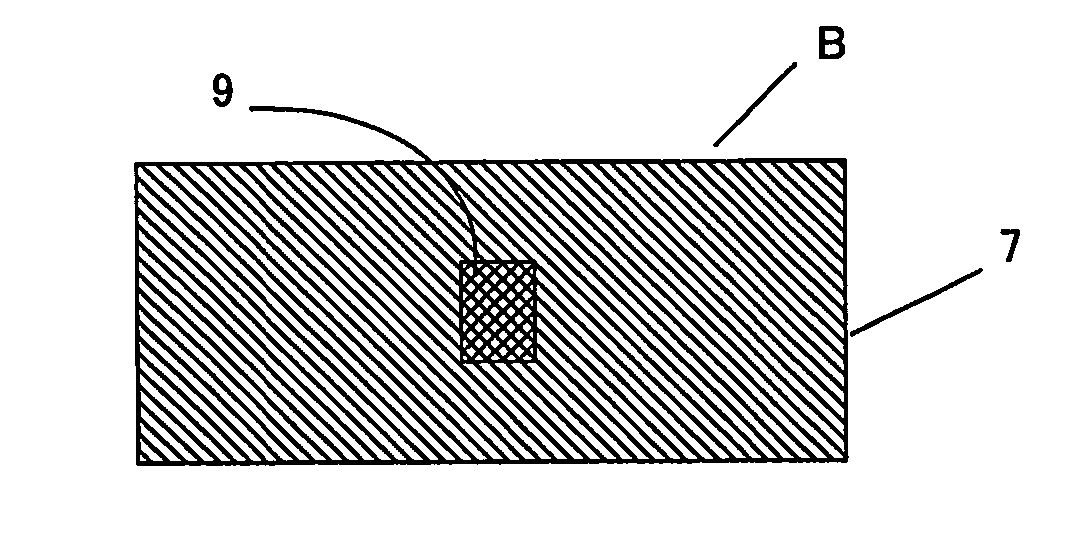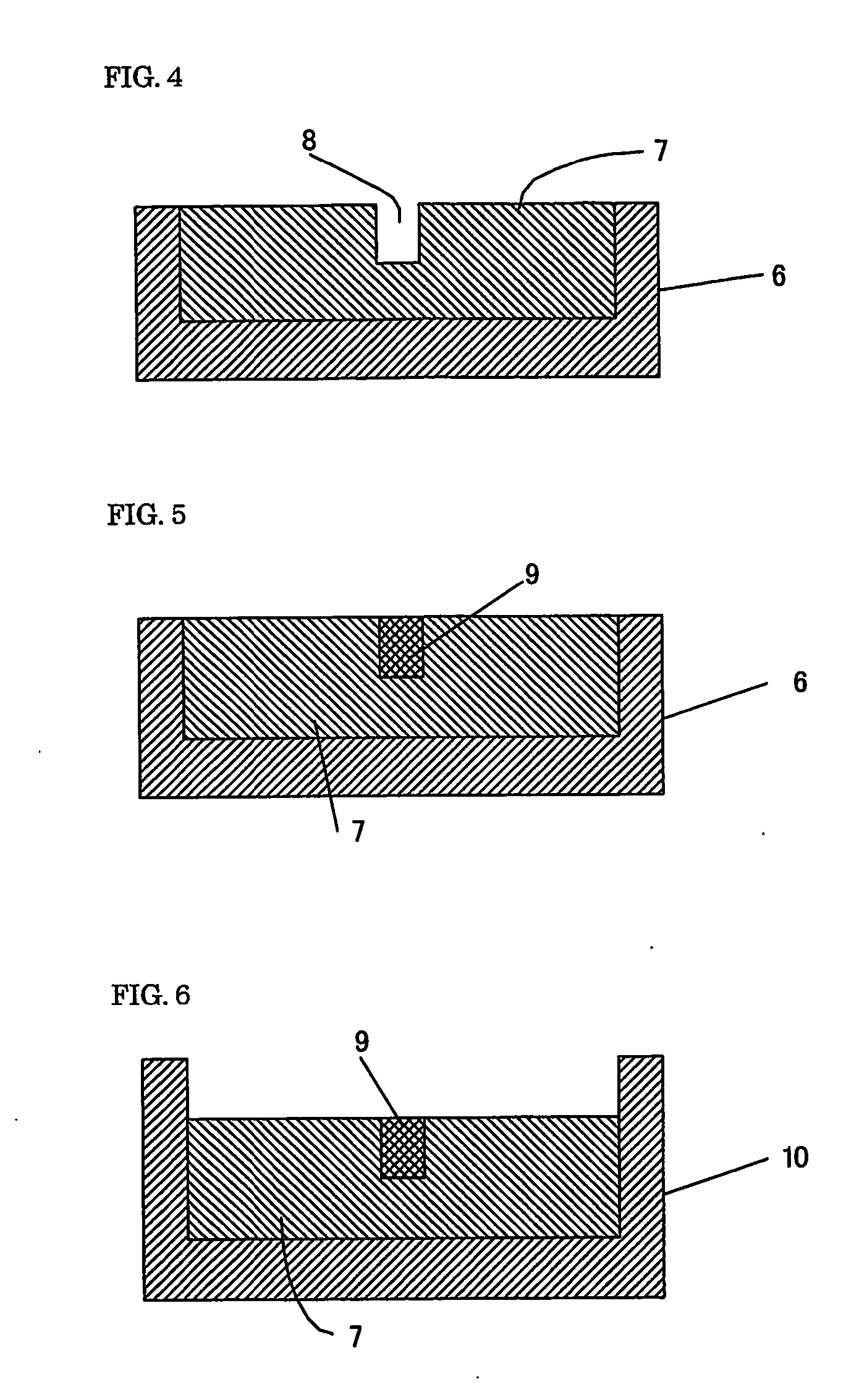Curable organopolysiloxane resin composition for optical transmission components, optical transmission components, and fabrication process thereof
a technology of organopolysiloxane and resin composition, which is applied in the direction of optical elements, instruments, optical waveguide light guides, etc., can solve the problems of temperature change stability and heat resistance, inferior productivity characteristics, and changes in optical characteristics
- Summary
- Abstract
- Description
- Claims
- Application Information
AI Technical Summary
Benefits of technology
Problems solved by technology
Method used
Image
Examples
example 1
[0122] This example illustrates the formation of a cured product of methylvinylphenylpolysiloxane resin used for optical transmission components. Coating solutions comprising curable organopolysiloxane resin compositions for optical transmission components were prepared by mixing the above-mentioned methylvinylphenylpolysiloxane resins (A-1), (A-2), and (A-3), which were used as component (A), the above-mentioned methylphenylhydrogenpolysiloxanes (B-1) and (B-2), which were used as component (B), a platinum / 1,3-divinyltetramethyldisiloxane complex [platinum content: 2 wt %] (C), which was used as component (C), methyl(tris(1,1-dimethyl-2-propynyloxy))silane (E), which was used as a cure retarder, and toluene, which was used as component (d1), using the proportions listed in Table 1 below (unit: g).
[0123] Using a chamber-open type system, the coating solutions were spin coated onto a silicon substrate at 2000 rpm and left stand for 10 minutes at room temperature. After that, hydrosi...
example 2
[0126] This example illustrates the formation of a channel type optical waveguide consisting of a cured product of methylvinylphenylpolysiloxane resin fabricated by coating process.
[0127] Using a chamber-open type system, composition 5 of Table 1 was spin coated onto a silicon substrate at 2000 rpm and left stand for 10 minutes at room temperature. After that, a film consisting of a hydrosilation-cured product of the methylphenylhydrogenpolysiloxane and the methylvinylphenylpolysiloxane resins with a uniform thickness of 7 μm was obtained by heating at 180° C. for 90 minutes. Its refractive index was 1.519. Next, the film consisting of the cured product was used for the bottom cladding layer and composition 3 of Table 1 was spin coated on top of it at 2000 rpm and left stand for 10 minutes at room temperature. After that, a film consisting of a hydrosilation-cured product of the methylphenylhydrogenpolysiloxane and the methylvinylphenylpolysiloxane resins with a uniform thickness o...
example 3
[0129] This example illustrates the formation of a slab type optical waveguide consisting of a cured product of methylvinylphenylpolysiloxane resin fabricated by coating process. After coating composition 5 of Table 1 onto a glass substrate and allowing it to stand for about 30 minutes at room temperature, a film made up of a hydrosilation-cured product of the methylphenylhydrogenpolysiloxane and the methylvinylphenylpolysiloxane resins with a thickness of 50 μm is fabricated by curing the composition by heating at 100° C. for 1 hour and at 180° C. for 1 hour and then peeling it from the glass substrate at room temperature. Its refractive index was 1.519. The film made up of the cured product did not exhibit polarization dependence and it was confirmed that its birefringence was negligibly small.
[0130] The film made up of the cured product was used for a bottom cladding layer, and composition 3 of Table 1 was coated onto it and cured by heating in the same manner, thereby forming a...
PUM
| Property | Measurement | Unit |
|---|---|---|
| Temperature | aaaaa | aaaaa |
| Fraction | aaaaa | aaaaa |
| Viscosity | aaaaa | aaaaa |
Abstract
Description
Claims
Application Information
 Login to View More
Login to View More - R&D
- Intellectual Property
- Life Sciences
- Materials
- Tech Scout
- Unparalleled Data Quality
- Higher Quality Content
- 60% Fewer Hallucinations
Browse by: Latest US Patents, China's latest patents, Technical Efficacy Thesaurus, Application Domain, Technology Topic, Popular Technical Reports.
© 2025 PatSnap. All rights reserved.Legal|Privacy policy|Modern Slavery Act Transparency Statement|Sitemap|About US| Contact US: help@patsnap.com



